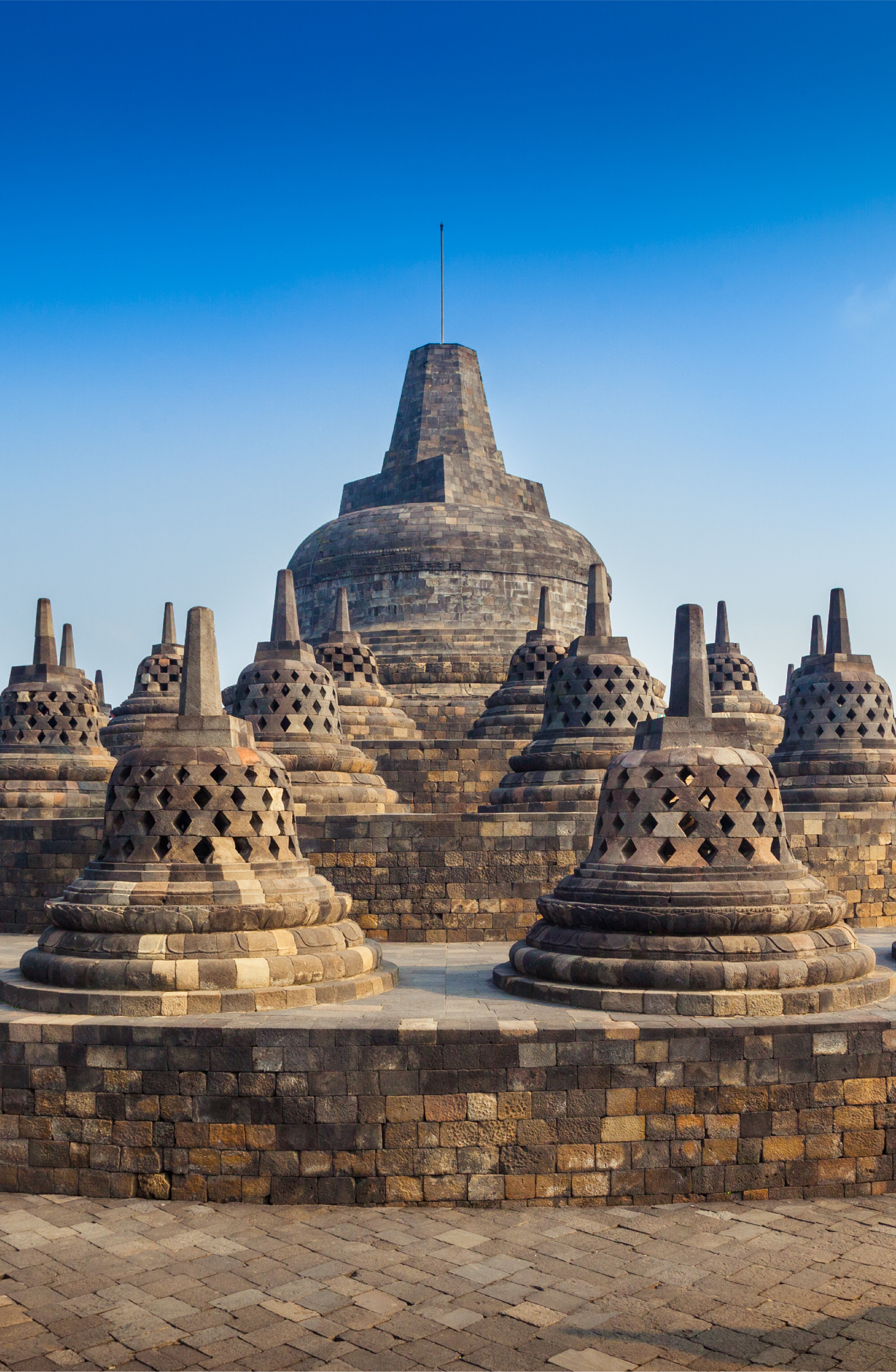Introduction
Imagine a cool, predawn breeze sweeping across verdant rice fields as the sky slowly awakens in hues of lavender and rose. In the distance, the majestic silhouette of a structure unlike any other begins to emerge from the mist – this is Borobudur. A UNESCO World Heritage site and the largest Buddhist temple in the world, its sheer scale and intricate artistry are simply breathtaking. More than a thousand years old, this architectural marvel captivates the soul, offering a spiritual pilgrimage even for the non-religious. You’re not just visiting a landmark; you’re stepping into a living, breathing piece of history, where every stone has a story, and every sunrise feels like a new beginning.
Highlights
What makes Borobudur so utterly compelling? It’s the harmonious blend of natural beauty and human ingenuity. The temple itself is a marvel of ancient engineering, built from two million volcanic and river stones. As you ascend its nine platforms, each level represents a stage of the Buddhist path to enlightenment. The lower levels, adorned with over 2,672 intricate relief panels, depict scenes from Buddhist cosmology, Jataka tales, and the life of Buddha. Can you imagine the skill and patience required to carve such detailed narratives into stone?
Above these narrative terraces, three circular platforms are home to 72 bell-shaped stupas, each housing a serene Buddha statue. Walking among these stupas, with the mist often swirling around, creates an almost otherworldly atmosphere. The pinnacle is the grand central stupa, symbolizing nirvana. From the top, the panoramic views are spectacular, stretching across emerald rice paddies to the distant peaks of Mount Merapi and Merbabu, often shrouded in a soft, ethereal haze. The air here, especially at dawn, carries a profound sense of peace, a tranquility that seeps into your very being.

Activities
To experience Borobudur at its most magical, the sunrise tour is an absolute must. While it means an early start, often around 4:00 AM, witnessing the sun ascend over the volcanoes, casting its golden glow upon the ancient stones, is a moment you’ll carry with you forever. It’s an iconic experience, allowing you to beat the main crowds and witness the temple in its most mystical light. Consider hiring a local guide. Their insights into the temple’s history, symbolism, and the stories etched into its reliefs will deepen your appreciation immeasurably. They can bring the stones to life!
After your main exploration, take time to wander the surrounding areas. Rent a bicycle and pedal through the quaint local villages like Candirejo, where you can observe traditional Javanese life, see artisans at work, and perhaps even learn a phrase or two of Indonesian. Don’t forget to visit the smaller, equally ancient temples of Mendut and Pawon, which form a pilgrimage path with Borobudur, lying just a few kilometers away. Each offers a unique perspective on the region’s rich Buddhist heritage.
Travel Tips
Best Time to Visit: The dry season, from May to September, offers the most pleasant weather. For that iconic sunrise experience, plan to arrive at the temple entrance between 4:00 AM and 4:30 AM. Alternatively, a late afternoon visit allows you to catch the golden hour and sunset, which is equally stunning and often less crowded than sunrise.
How to Get There: Borobudur is approximately 40 kilometers northwest of Yogyakarta, the closest major city with an international airport (Adisutjipto International Airport – JOG). You can easily arrange a taxi, private car, or join a tour group from Yogyakarta. Public buses are an option for budget travelers, but they involve transfers and take longer.
Entrance Fees: As of recent times, foreign visitors typically pay around IDR 500,000 (approximately $35 USD) for a regular day ticket. The sunrise ticket (often arranged through hotels or specific operators) is usually higher, sometimes around IDR 450,000 to IDR 500,000, but grants earlier access. Always check the official website or reputable tour operators for the most current prices, as they can change.
Nearby Attractions: Beyond Mendut and Pawon, consider a visit to Punthuk Setumbu Hill for a different, often breathtaking, sunrise view of Borobudur emerging from a sea of fog. For a taste of local culture, the Salak Pondoh fruit plantations are worth a stop, where you can sample this unique snake-skinned fruit.
Local Delights & Souvenirs: While in the area, indulge in local Javanese cuisine. Don’t miss Gudeg, a traditional dish made from young jackfruit stewed in coconut milk, often served with chicken or egg. For snacks, Bakpia Pathok, small round cakes with various fillings, are a popular treat. When it comes to souvenirs, look for intricate batik fabrics, wooden carvings, miniature Borobudur replicas, and handcrafted silver jewelry from nearby Kota Gede in Yogyakarta. These aren’t just trinkets; they’re pieces of Indonesian artistry. Remember to wear comfortable walking shoes, a hat, and bring plenty of water. Dress modestly, especially if you plan to visit other religious sites.
Conclusion
Borobudur is more than just a destination; it’s an experience that awakens the senses and nourishes the soul. From the awe-inspiring architecture and profound spiritual narratives to the breathtaking sunrises and serene landscapes, every moment spent here is a treasure. It reminds us of humanity’s incredible capacity for creation and devotion. So, pack your bags, prepare your heart for wonder, and allow the timeless majesty of Borobudur to weave its magic around you. You’ll leave not just with stunning photos, but with a deeper appreciation for history, culture, and the enduring power of ancient beliefs. Isn’t it time to embark on your own Borobudur adventure?


